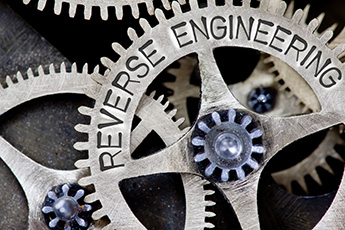Although various forms of payroll have existed since ancient times, payroll as we know it today began with the advent of bookkeeping in the 14th and 15th centuries. Bookkeeping was a necessity for keeping track of sales and purchases, then eventually wages. Payroll in the US is now supported by the American Payroll Association, formed in 1982, and they helped automate the process. Even automated, however, the standard payroll schedule no longer seems sufficient for American workers.As a group, Americans have a cash flow problem. The American Payroll Association survey found that 72% of participants would find it very or somewhat difficult to pay their bills if their next paycheck were a week late.Another survey from Bankrate found that a quarter of respondents had no emergency savings, up from 21% two years ago. Just over half have less than three months’ expenses (an amount often recommended by financial advisors) socked away. Not surprisingly, higher earners are much more likely to have savings. People who earn less are less able to weather a pay delay or an emergency.Overdraft spending and payday loans are two common strategies for workers who run out of money before payday, but neither is affordable nor sustainable. The average annual interest on a $350 payday loan is 391%, and another Bankrate survey says that the average fee for an overdraft is just under $30 — an 11% drop from 2021. What’s more, workers earning low and moderate incomes are 2x more likely to overdraft their accounts than better-heeled customers. Interest and overdraft fees add up quickly and can make economic survival even more difficult for lower-income workers.The great majority of us would be happy to get paid immediately for the work that we’ve done instead of waiting until payday officially comes. That makes earned wage access (EWA), which lets employees withdraw their earnings anytime they like, increasingly popular. Employers with low-income, hourly workers (such as Arby’s and Taco Bell), a staffing agency for nursing homes, and PayPal have all started offering EWA as an employee benefit. Through EWA, workers got early access to $3.2B in wages in 2018; that number nearly tripled by 2020, rising to $9.5B. It could become a standard consumer finance offering in the coming years.How does EWA work?Consumers can generally access EWA one of two ways. One method is through an employer-sponsored partnership that’s integrated into the company payroll system and thus managed and paid for by the employer. The other option is more employee-managed and involves the worker setting up an account through a financial services provider such as a community financial institution (CFI) or a fintech, where the employee will receive the funds directly.EWA funds can be received in one of the following ways:
- Direct deposit
- Prepaid cards or debit cards
- Bank transfers
- EWA vendor accounts
Financial institutions that offer prepaid cards for payroll disbursements have also partnered with EWA providers to give employees who get paid via that bank’s prepaid card early access to at least some of their money. U.S. Bank, PNC, Citizens, and J.P. Morgan all have this kind of offering.EWA fees range from $5 to $10 as a monthly subscription for employee-benefit and payroll-linked EWA, or a per-transaction fee of $1 to $5. Employers that are offering a worker benefit might pay the fee as part of that benefit. Direct-to-consumer EWA might cost between $1 and $10 per month.How can EWA benefit CFIs?
EWA has the potential to benefit both CFI employees and customers. Here are three key areas where implementing EWA would make a huge difference to your CFI:
EWA has the potential to benefit both CFI employees and customers. Here are three key areas where implementing EWA would make a huge difference to your CFI:
- Offer EWA to your employees. Workers would get all the benefits EWA access offers: a chance to smooth their cash flow, fund unexpected needs, and avoid high-interest payday loans, missed payments, overdraft fees, and constant financial stress.
- Use an EWA partnership to drive your direct deposit strategy. Customers who have direct deposit accounts are 32x more valuable over their lifetimes than customers who don’t. A customer switching to direct deposit would be eligible for EWA, and could access more money if they deposit their entire paycheck, compared with depositing just a fraction.
- Use EWA to bring in more customers and to improve the potential of current clients by helping them achieve greater financial stability. Customers appreciate financial institutions that offer innovative products, and according to Arizent, 77% of Americans would use EWA if their financial institution offered it.
Earned wage access can help CFI employees and customers by improving their financial lives, lessening their debt, and often preventing late fees. It can also help drive your CFI’s direct deposit business.




